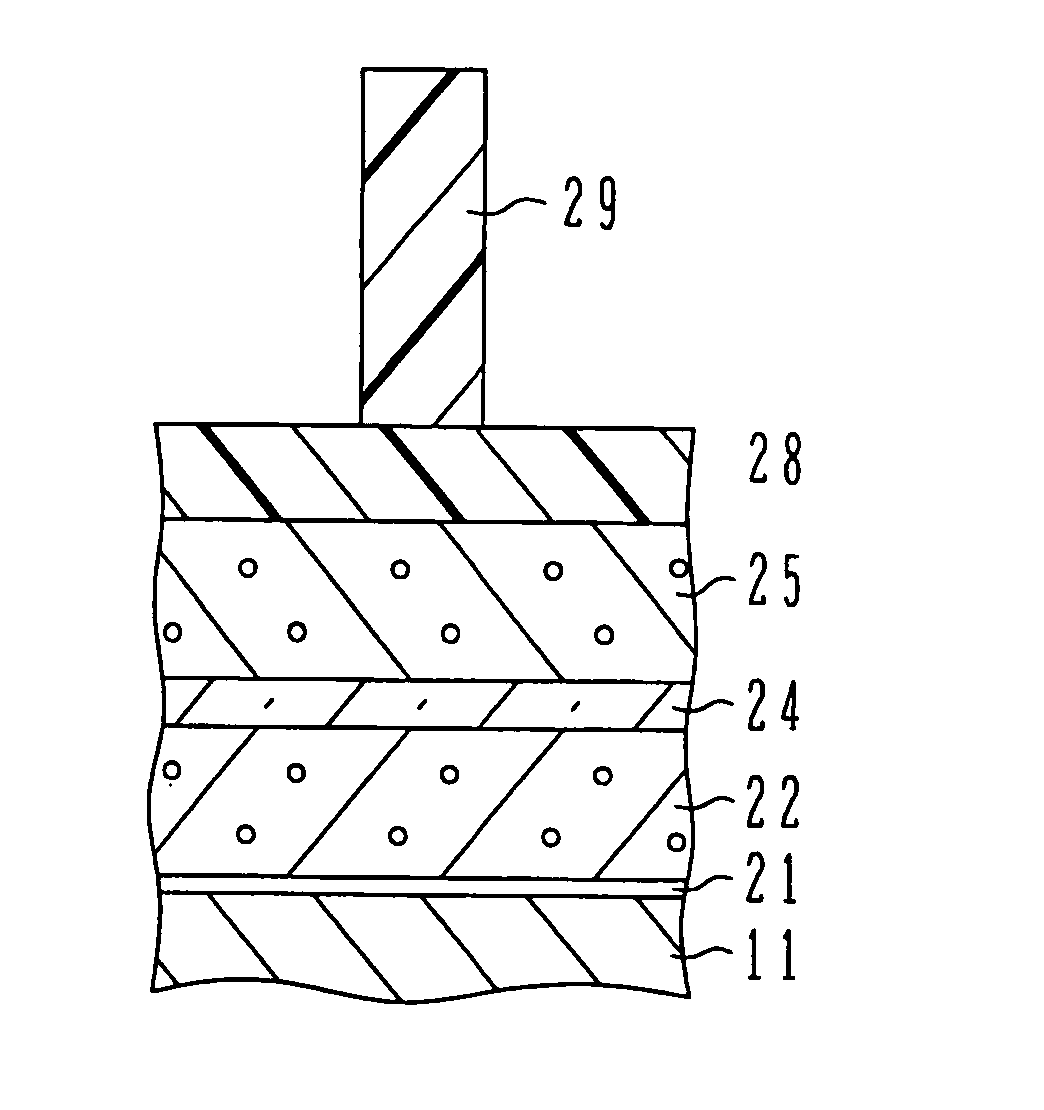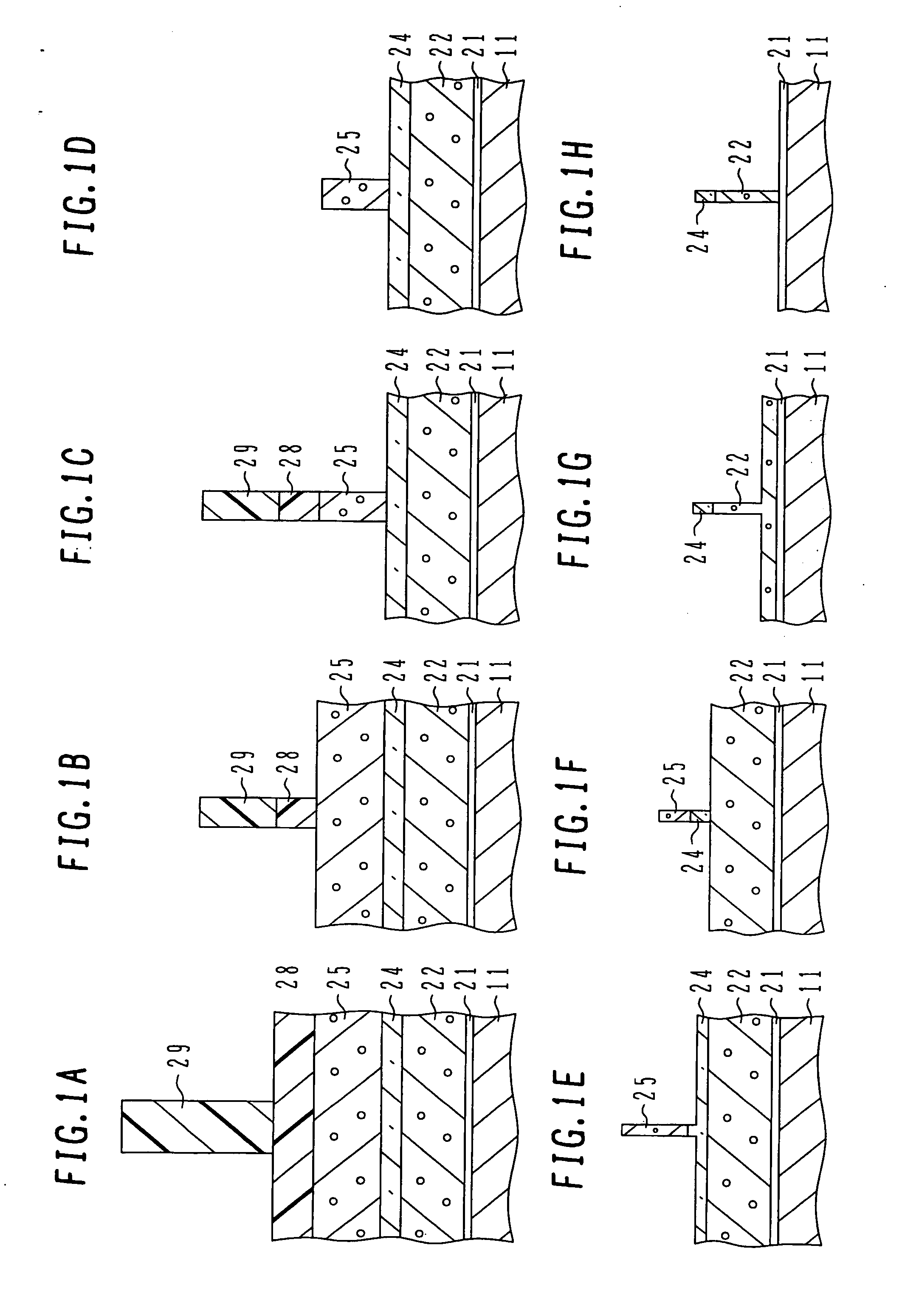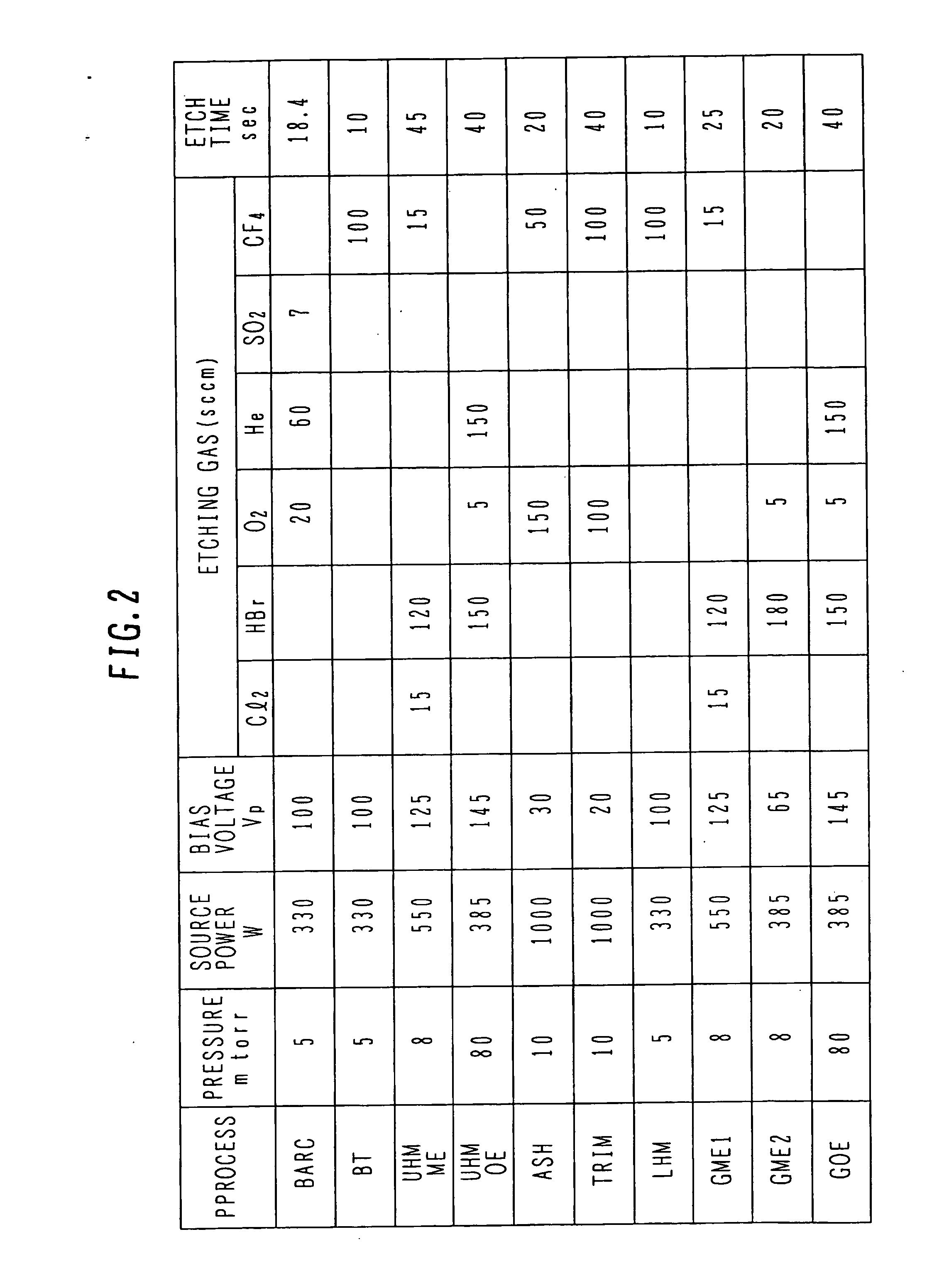Manufacture method for micro structure
a manufacturing method and micro-structure technology, applied in the field of manufacturing methods for micro-structures, can solve the problems of resist pattern falling, resist material mainly used is photosensitive to a short wavelength of 193 nm but not stable, resist is not so stable, etc., to achieve easy etching, good controllability, and patterning. easy
- Summary
- Abstract
- Description
- Claims
- Application Information
AI Technical Summary
Benefits of technology
Problems solved by technology
Method used
Image
Examples
first embodiment
[0032] With reference to FIGS. 1A to 1H, the first embodiment will be described. FIGS. 1A to 1H are cross sectional views of a semiconductor substrate illustrating main processes of a micro structure manufacture method. A series of etching / trimming processes is executed by using, for example, an inductively coupled plasma (ICP) etcher. A table in FIG. 2 shows a summary of process conditions.
[0033] As shown in FIG. 1A, the surface of a silicon substrate 11 is thermally oxidized and nitrogen or the like is introduced to form a silicon oxynitride film 21 having a thickness of about 1 nm, the silicon oxynitride film constituting a gate insulating film. A polysilicon film 22 constituting gate electrodes is deposited on the gate insulating film 21 to a thickness of 105 nm by thermal CVD. The polysilicon film 22 is an etching target film. A silicon oxide film 24 as a lower hard mask film is deposited on the polysilicon film 22 to a thickness of 30 nm by thermal CVD, and a polysilicon film ...
second embodiment
[0067]FIGS. 6A to 6D are cross sectional views of a semiconductor substrate illustrating main processes of a micro structure manufacture method according to the
[0068] As shown in FIG. 6A, a gate insulating film 21 of HfSiON having a thickness of 5 nm is formed on the surface of a silicon substrate. A TiN layer 22a having a thickness of 10 nm and a W layer 22b having a thickness of 70 nm are stacked on the gate insulating film by CVD or sputtering (PVD) to form a gate electrode layer.
[0069] For example, the HfSiON film 21 is formed by thermally oxidizing the surface of the silicon substrate and growing an HfON film on silicon oxide by CVD. Nitrogen may be introduced after thermal oxidation. The HfSiON film may be grown by CVD. By using material having a dielectric constant higher than that of silicon oxide, the physical thickness of the gate insulating film can be made thick while a silicon oxide equivalent thickness is maintained low, and leakage current can be suppressed. The mate...
third embodiment
[0076]FIGS. 7A to 7D are cross sectional views of a semiconductor substrate illustrating the main processes of a micro structure manufacture method according to the
[0077] As shown in FIG. 7A, a polysilicon film 22b having a thickness of 100 nm is formed on a TaN layer 22a having a thickness of 5 nm to form a gate electrode layer. The TaN layer is deposited by sputtering (reactive sputtering). Other lamination structures are similar to those of the first embodiment.
[0078]FIG. 7B shows the state that a hard mask is formed, corresponding to FIG. 1F. The silicon surface of the upper gate electrode layer 22b is exposed.
[0079]FIG. 7C shows the state that the polysilicon gate electrode 22b is etched by using mixture gas of HBr / O2 similar to the process shown in FIG. 1G. The TaN lower gate electrode 22a functions as an etch stopper. Even if the upper hard mask of polysilicon is left, it can be removed at this stage by over-etching.
[0080]FIG. 7D shows the state that the lower gate electro...
PUM
 Login to View More
Login to View More Abstract
Description
Claims
Application Information
 Login to View More
Login to View More - R&D
- Intellectual Property
- Life Sciences
- Materials
- Tech Scout
- Unparalleled Data Quality
- Higher Quality Content
- 60% Fewer Hallucinations
Browse by: Latest US Patents, China's latest patents, Technical Efficacy Thesaurus, Application Domain, Technology Topic, Popular Technical Reports.
© 2025 PatSnap. All rights reserved.Legal|Privacy policy|Modern Slavery Act Transparency Statement|Sitemap|About US| Contact US: help@patsnap.com



